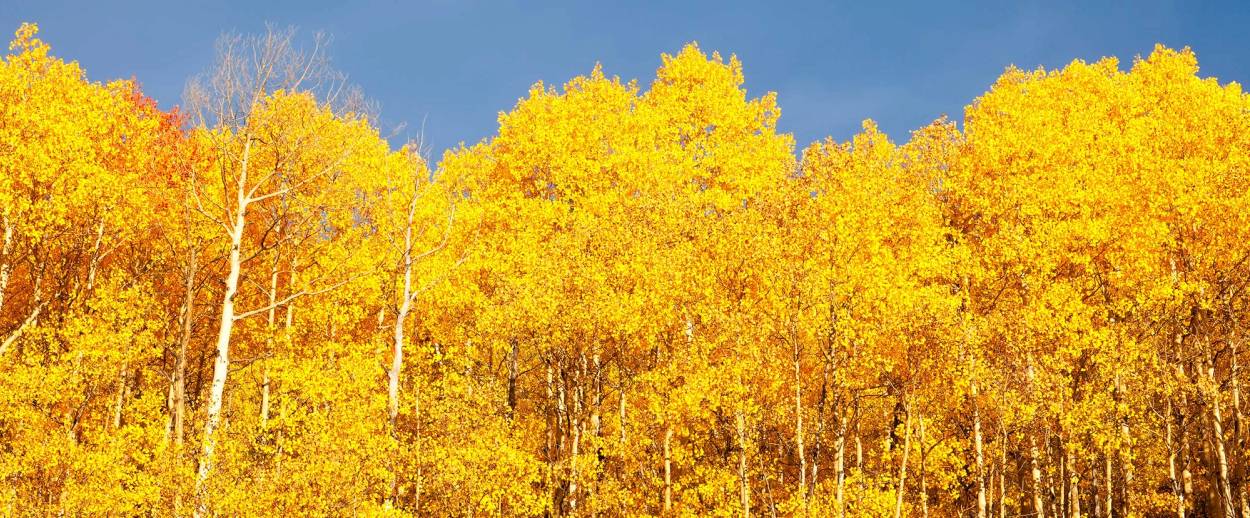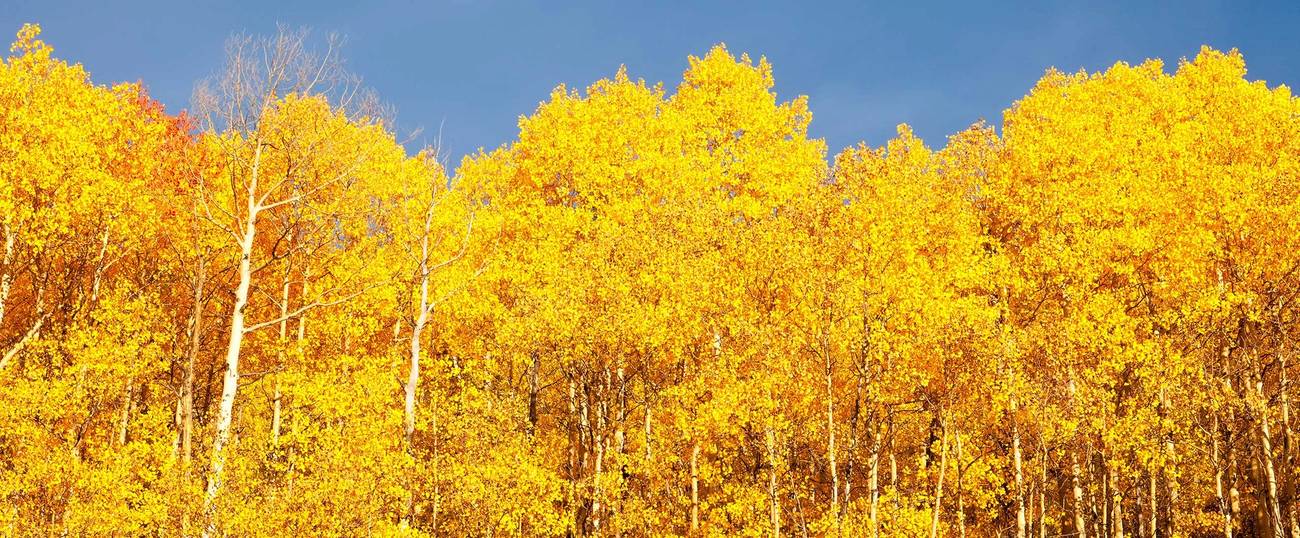Outside for the Holidays
Reconnecting with nature on Rosh Hashanah




For some, Rosh Hashanah means davening in synagogue. For me, this time of year has come to signify something else: stepping outside the confines of the synagogue, and reconnecting to the natural world.
I grew up in an observant Reform Jewish household in Southern California in the 1960s. This translated into attending Sunday school, Hebrew school, becoming a bat mitzvah, and going to High Holiday services at our small temple in Downey, California—one that my father and uncle, Eastern European immigrants, helped build. I even liked listening to my father sing the prayers in his quiet, off-key voice.
Rosh Hashanah has always been my favorite holiday. It marks the turning of the calendar toward shorter days and cooler nights, even though in Southern California we usually sweated through our High Holiday outfits with the early fall heat wave and Santa Ana winds that inevitably hit. I savored the sweet honey and tart apples from our pre-swimming pool backyard. I cherished going to the Fairfax district with my mom to shop for special foods, looked forward every year to my Aunt Lena’s legendary honey cake. I loved the large, boisterous family gatherings with a table overflowing with food, laughter, and stories. I especially anticipated going to synagogue where the entire community came together, highlighted by my cousin Steve’s masterful blowing of the shofar.
For my young self, being in temple was an extension of our home and I never thought I’d want to be anywhere else.
But when I turned 9, I was finally allowed to attend sleep-away summer camp at the legendary Camp Hess Kramer nestled in the hills of the Malibu coast. My first session was only 10 days long, but since it was my first time away from home for more than one night, those days felt like an eternity. Camp was a magical place, filled with songs and Jewish pride, but also trees I’d never experienced in my suburban neighborhood: I was surrounded by and felt embraced by the expansive coast live oaks and endlessly tall eucalyptus, with their menthol-laced smell and splotched-bark trunks.
The culmination of the session was Shabbat. I walked with my bunk mates and counselor into a space that I knew, even at 9, was sacred. Roughly hewn benches stood in rows, underneath a canopy of trees, we sat facing an ark that opened to a rock wall.
I’d always been a kid who could never get enough of being outside. I remember my mom’s voice calling out into the darkening evening, pulling me off the schoolyard behind our house, or my favorite corner of our backyard. Until that first summer at camp, I’d never equated being Jewish with nature, but that experience merged my love of the outdoors with my emerging sense of being Jewish as an individual, as well as within a community. Until then, I didn’t know I could feel Jewish beyond the walls of the temple. I was hooked.
After a few summers, I graduated to the camp on the hill for older kids, Gindling Hilltop. Instead of sitting under the sacred tree canopy, the entire camp trekked along a narrow path to a hill where an ark opened to the Pacific Ocean. As the Torah was removed, I could see the ocean’s tide, could smell the salt, could even see dolphins amid the waves. After that summer, when I returned home and went to High Holiday services, instead of joy and comfort, I felt distance and a sense of claustrophobia. I never felt the same inside a synagogue again.
I left Southern California for college and with it, replaced my Jewish life with that of an aspiring actress. Art became my religion, theater my temple. I moved from the West Coast to New York City, the most Jewish city in our country, and felt no need to make any extra effort, not in a place that shut down for Yom Kippur.
After years in the hard-edged, noisy city, I moved to Colorado with my soon-to-be husband. That summer, we stood together on a mountaintop in Boulder, exchanging wedding vows on a windy summer night. The chuppah poles shook and threatened to lift our marriage tallit into the sky. While the space harkened back to my days at camp, the oaks and eucalyptus replaced by pine and blue spruce, I’d not yet reconnected to that part of myself I’d left in Malibu when I was a kid.
We became parents and our children attended Hebrew school, became bat mitzvah, and went to Jewish summer camp. It felt important, especially in our town with little Jewish presence, for our children to grow up in a Jewish home and to support the small storefront shul that had opened. Our family became reliable regulars at the shul, and while I enjoyed the sense of community, something again was missing. I’d fallen into the pattern of dutifully showing up to shul more out of habit and obligation than out of anything that sung to my soul like my days at camp, or exchanging vows on that mountainside.
Two years ago, another shift happened. Perhaps it was the brilliance of a certain blue sky that means autumn in Colorado has arrived for a short, precious time before the first snowfall. Perhaps it was photos of bright golden trees friends were posting on Facebook. Perhaps it was that our kids had stopped coming with us to services, more absorbed in school than shul. All of this added up to a familiar restlessness and a deep knowing I had to take Rosh Hashanah, and myself, outside. I knew that I could not spend Rosh Hashanah inside a synagogue. I announced this to my husband, who had become a regular of the minyan crew at our local shul.
“I’m going up to Brainard Lake for Rosh Hashanah,” I announced.
“You’re not going to shul?” he asked, nervously.
“No. I have to see the aspen trees. I can’t be inside. I want you to come with me, but I’m going.”
Rosh Hashanah morning, we drove a little more than an hour from our house. We drank our coffee in silence. The tension was palpable. We both felt like we were playing hooky and it felt dangerous and exhilarating, kind of like our wedding. As we drove into higher elevation and the bright golden trees came into view, our bodies relaxed, our breathing no longer that of truant congregants. I marveled at the regrowth only five years after the devastating 2013 Colorado floods and said a prayer of thanks for the ability to return and rebuild.
We parked our car and started walking onto a trail. We spotted red-winged blackbirds, lily pads the size of dinner plates. Our fingers grazed the tops of tufted grasses. We walked along a creek and found a place to sit. A calm had settled over us as we listened to the water’s path along the worn rocks. I thought of Rabbi Akiva and the water wearing away at the hardness of a rock. We found a grove of golden aspens and a softening occurred as the aspen leaves quivering in the wind entered my own breathing.
We walked more, and talked quietly about what the year had meant, and what this day signified. I sat on a mossy log and looked up and around. I was surrounded by trees and that feeling from decades before landed right back in my heart. That early, seminal childhood experience in the synagogue canopy; of the ark, the Torah, and the sea, the tide returning millions of times a day. I’d traded the ocean and eucalyptus for mountains and aspen trees, but the feeling was the same. I felt quiet, calm. I recited the Shema over and over again, to myself, with my husband, and the rock had been softened.
Last November, my beloved camps were burned to the ground during the devastating Woolsey Fire. My canopy synagogue and the ark on the hill were destroyed, as was much of the rest of my childhood Jewish outdoor haven. The place I had returned to for so many years was now going to have to start all over, the small saplings emerging out of the ash. A return of sorts.
This year, on my Rosh Hashanah pilgrimage, I’m seeking solace, refuge, and quiet answers that only trees can provide. Aspen trees, like our struggling and embattled Jewish community, are a deeply connected ecosystem; each one a singular organism, but part of something much larger than the single unit. In this time of climate crisis, in this time of bearing ourselves against a new wave of antagonism, I feel an urgency to return to the aspens, to walk among them, to bathe in their golden light, to whisper the Shema to the quivering leaves.
Lisa Trank is a Colorado-based writer who attended Wilshire Boulevard Temple Camps for eight summers, from 1969-1977. Her work has been published in the Saturday Evening Post, Kveller, the University of Denver Journal, Tiferet, as well as a number of anthologies.